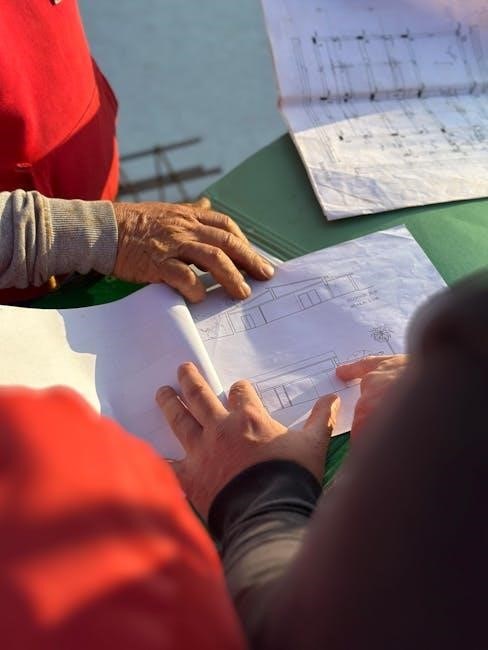
DIY planter box plans offer a fantastic way to personalize your outdoor space. With step-by-step instructions and readily available PDF plans, you can enhance your gardening experience and add greenery to your patio.
Planter boxes offer numerous advantages for both novice and experienced gardeners. They provide a contained space for plants, making it easier to manage soil conditions and prevent weed growth. Building your own planter box allows for customization to fit specific spaces, such as small patios or elevated gardens. Utilizing free DIY planter box plans, including PDF downloads, enables you to create stylish and functional outdoor features without significant cost. These plans often include step-by-step guides, material lists, and detailed instructions, ensuring a smooth building process. Moreover, planter boxes can be constructed from durable materials like cedar or redwood, guaranteeing years of use and enhancing the aesthetic appeal of your outdoor area, making them a worthwhile DIY project.
Numerous online resources offer free PDF plans for DIY planter boxes, catering to various skill levels and design preferences. These plans provide detailed step-by-step instructions, material lists, and cut plans, simplifying the construction process. Many websites and blogs dedicated to woodworking and gardening feature downloadable PDF guides for building small patio planter boxes, elevated garden planter boxes, and raised planter box designs. These free plans often include user-friendly diagrams and illustrations, making them accessible to beginners. Some plans even provide SketchUp files for a more interactive and customizable building experience. By leveraging these readily available free PDF plans, you can easily create beautiful and functional planter boxes for your outdoor space, enhancing your gardening experience while saving money.
Finding the right planter box plan involves exploring online resources and platforms like Etsy. These platforms offer a variety of options, from simple designs to more complex woodworking blueprints.
Numerous websites offer free DIY planter box plans that include step-by-step instructions. These resources often provide downloadable PDF documents, making it easy to follow along during the construction process. Many depot stores and woodworking sites have plans suitable for beginners and experienced builders alike.
You can find designs for small patio planter boxes, elevated garden planter boxes, and raised planter box plans. Some sites also offer SketchUp files, allowing you to customize the design to your liking. Video tutorials are available on platforms like YouTube, providing visual guidance. These plans often include a detailed cut list and material shopping list, ensuring a smooth building experience. Utilizing online resources is a great way to find the perfect planter box plan for your needs and skill level.
Etsy is an excellent marketplace to discover unique and detailed PDF planter box plans. Independent creators often sell their custom designs, providing step-by-step instructions, material lists, and cutting guides. You can find plans for various types of planter boxes, including elevated garden planters, raised garden beds, and L-shaped designs.
Many plans include detailed diagrams and 3D renderings, making the construction process easier to understand. Etsy offers a wide range of options, from modern planter boxes to rustic designs, allowing you to find a plan that matches your aesthetic. Some sellers even provide SketchUp files for further customization. Purchasing plans on Etsy supports independent designers and gives you access to high-quality, professionally designed projects; Be sure to check customer reviews for feedback on the plan’s clarity and ease of use.
Planter box plans come in diverse styles. These options range from small patio planters to elevated garden beds. There are also raised planter boxes, and L-shaped designs, perfect for every space.
Small patio planter box plans are perfect for adding greenery to limited spaces. These DIY projects often utilize inexpensive materials and simple tools, making them accessible for beginners. Free PDF downloads are frequently available, offering step-by-step instructions and material lists. These plans typically focus on maximizing space and aesthetics, providing a stylish touch to any patio or balcony. Common materials include cedar, redwood, or treated lumber, ensuring durability against the elements. Many designs incorporate features like drainage holes and elevated bases to promote healthy plant growth. You can often complete these planter boxes in an afternoon, adding a touch of nature to your outdoor living area quickly and affordably.
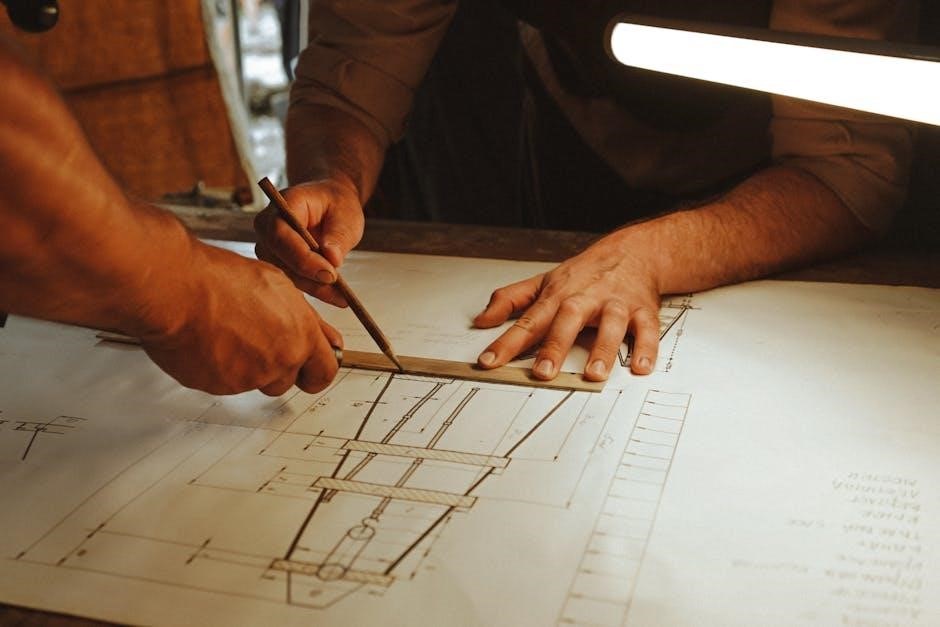
Elevated garden planter box plans provide an ergonomic gardening solution, reducing strain on your back and knees. These DIY projects are often available as downloadable PDF files, offering detailed instructions and material lists for easy construction. Elevated planters are ideal for those with limited mobility or small spaces, allowing for efficient use of vertical space. Common designs include sturdy legs or frames made from wood or metal, ensuring stability and durability. Many plans emphasize the use of weather-resistant materials like cedar or redwood to withstand outdoor conditions. These planter boxes not only enhance your gardening experience but also add an aesthetic touch to your patio or garden, bringing plants closer to eye level.
Raised planter box plans are perfect for creating a dedicated garden space, especially when soil conditions are poor. These DIY projects often come with free PDF downloads, providing step-by-step instructions for easy assembly. A raised planter box offers better drainage and soil control, promoting healthier plant growth. Plans typically include material lists, cut diagrams, and detailed assembly guides. Common materials include cedar, redwood, or treated lumber for durability. Raised beds can be customized to various sizes and heights to suit your gardening needs. They also reduce bending and kneeling, making gardening more accessible and enjoyable. Many designs incorporate simple joinery techniques, making them suitable for beginner woodworkers. With a well-executed plan, you can build a functional and attractive raised planter box in just a few hours.
L-shaped raised garden bed plans are an excellent choice for maximizing corner spaces in your yard or garden. These plans typically provide detailed instructions and material lists, often available as free PDF downloads. An L-shaped design can create a focal point while offering ample planting area. Many plans include options for customization, such as adding trim or varying the height of the beds. Common materials like cedar or redwood ensure durability and weather resistance. The plans usually consist of step-by-step guides with clear diagrams, making the construction process manageable for DIY enthusiasts. Building an L-shaped raised garden bed allows for organized planting and efficient use of space. These beds can also improve soil drainage and control, leading to healthier plant growth. The unique shape adds visual appeal and can be a stylish addition to any outdoor setting. With a good plan, you can complete this project in a weekend.
Constructing your own planter box involves gathering essential materials, utilizing the right tools, and following a detailed construction process. Step-by-step guides ensure a smooth building experience, resulting in a beautiful planter.
To embark on your DIY planter box project, gathering the necessary materials is crucial. You’ll need wood, preferably cedar or redwood, known for their durability and resistance to rot, ensuring your planter box lasts for years. Consider cedar tone decking boards for a stylish look. Other essential materials include exterior-grade screws, landscape fabric to line the interior, and wood glue for added strength. Don’t forget measuring tape, safety glasses, and gloves. Depending on your chosen design, you might also need trim pieces for a decorative touch. A comprehensive list from your chosen PDF plan will ensure you have everything to start building your planter box efficiently.
Before diving into the construction of your DIY planter box, ensure you have the essential tools at hand. A power drill with various drill bits and a screwdriver attachment will be invaluable for assembling the structure. A saw, whether a hand saw, circular saw, or miter saw, is necessary for cutting the wood according to your plan’s dimensions. A measuring tape and square will help ensure accurate cuts and right angles. Safety glasses and work gloves are paramount for protection. Clamps can hold pieces together while the glue dries or screws are driven. A sander or sandpaper will smooth rough edges for a polished finish. With these tools, the DIY planter box project will be much smoother.
Begin the construction process by cutting the wood pieces according to the dimensions specified in your chosen planter box plan. Assemble the frame by joining the sides, ensuring right angles using a square. Secure the corners with screws or nails, and add wood glue for extra strength. Attach the bottom panel, ensuring it is properly supported to hold the soil. Drill drainage holes in the bottom to prevent waterlogging. If your design includes legs or a stand, attach them securely to the frame. Sand all surfaces to remove splinters and rough edges. Consider adding a liner to protect the wood from moisture. Apply a weather-resistant finish to prolong the life of your planter box. Once dry, your planter box is ready for soil and plants!
Customization allows you to tailor your planter box. Consider the aesthetic and choose appropriate wood like cedar or redwood. Adding trim and unique finishes can enhance the visual appeal of your planter.
Choosing the Right Wood (Cedar, Redwood)
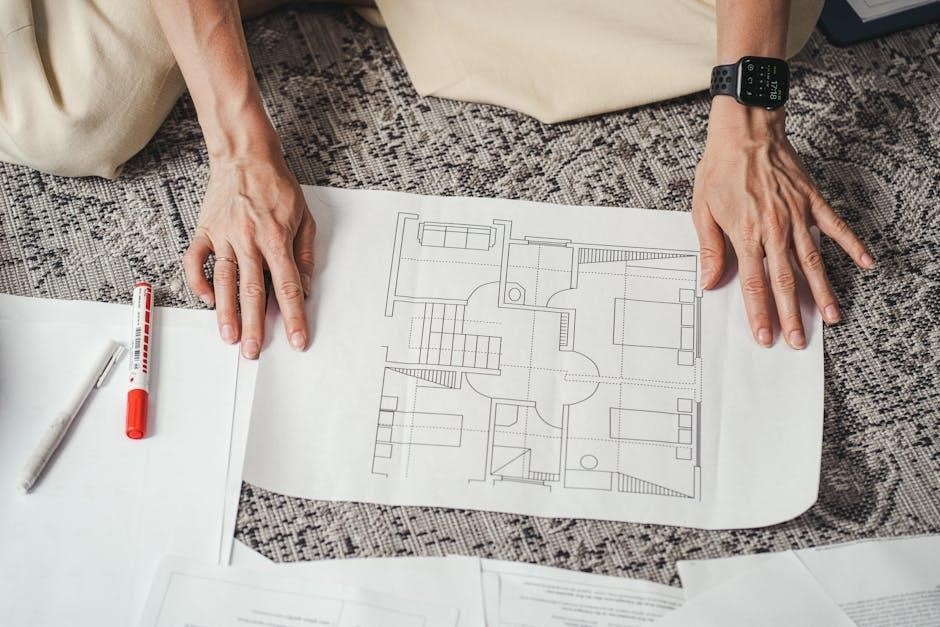
When selecting wood for your DIY planter box, cedar and redwood are excellent choices due to their natural resistance to decay and insects, ensuring longevity. Cedar offers a fragrant aroma and beautiful grain, while redwood boasts a rich color and dimensional stability.
These woods require minimal treatment and can withstand outdoor elements effectively. Consider the aesthetic you desire. Cedar will gradually weather to a silvery-gray if left untreated, while redwood will maintain its reddish hue with proper sealing. Both options provide a durable and attractive foundation for your plants, enhancing the overall appeal of your garden or patio.
Choosing the Right Wood (Cedar, Redwood)

Elevate your DIY planter box with personalized finishing touches and trim that reflect your style. Consider adding decorative molding to the top edges for a refined look. Paint or stain the wood to complement your outdoor décor. For a rustic touch, use reclaimed wood and embrace its natural imperfections.
Enhance functionality by attaching a trellis to support climbing plants or adding drainage holes to prevent waterlogging. Don’t forget to line the interior with landscape fabric to protect the wood from moisture. These details will not only enhance the aesthetics but also prolong the life of your planter box, creating a beautiful and thriving space for your plants.
Choosing the Right Wood (Cedar, Redwood)
Explore video tutorials for visual learners and SketchUp files for detailed 3D models. Find inspiration and guidance to build your perfect DIY planter box with ease.
Choosing the Right Wood (Cedar, Redwood)
Video tutorials are an invaluable resource for DIY enthusiasts looking to build planter boxes. These visual guides provide a step-by-step walkthrough of the entire construction process, from selecting the right materials to adding the final touches. Many tutorials feature detailed demonstrations of cutting, assembling, and finishing techniques, making it easier to understand complex steps. You can find videos that cover various planter box designs, including small patio planters, elevated garden beds, and L-shaped raised gardens. Some tutorials even include tips on customizing your planter box to match your specific style and needs. Whether you’re a beginner or an experienced woodworker, video tutorials can help you create a beautiful and functional planter box for your outdoor space.

Overview of Planter Box Benefits
Availability of Free PDF Plans
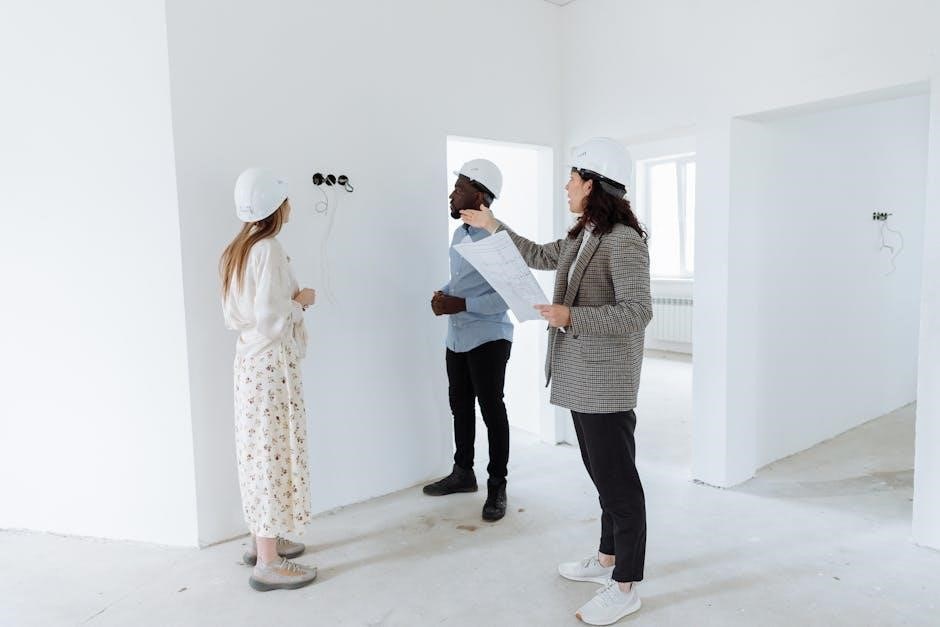
Finding the Right Planter Box Plan
Online Resources for Plans
Etsy as a Source for PDF Plans
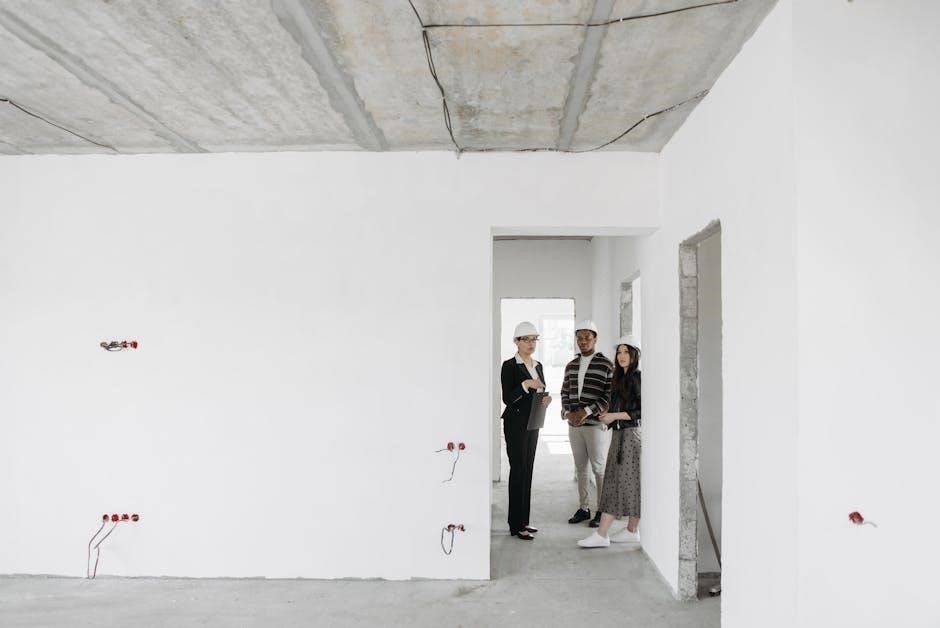
Types of Planter Box Plans
Small Patio Planter Box Plans
Elevated Garden Planter Box Plans
Raised Planter Box Plans
L-Shaped Raised Garden Bed Plans

Building a Planter Box: Step-by-Step Guide
Materials Needed
Tools Required
Construction Process
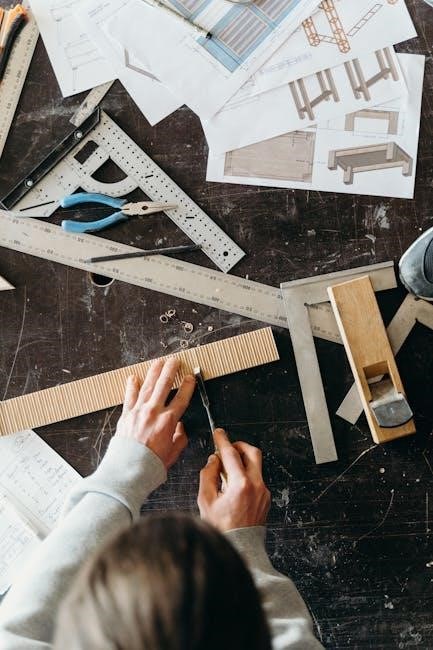
Customization and Design
Choosing the Right Wood (Cedar, Redwood)
Adding Finishing Touches and Trim

Additional Resources
Video Tutorials
SketchUp Files
SketchUp files offer a powerful tool for visualizing and customizing your planter box plans before you start building. These digital 3D models allow you to explore different designs, dimensions, and materials in a virtual environment. With SketchUp, you can easily adjust the size and shape of your planter box, experiment with various wood types like cedar or redwood, and add custom features such as trim or decorative elements. Many online resources and Etsy sellers provide SketchUp files along with their PDF planter box plans, giving you a comprehensive set of tools to bring your vision to life. Whether you’re a seasoned designer or a beginner, SketchUp files can help you create a planter box that perfectly fits your space and style, ensuring a successful and satisfying DIY project. These files allow for detailed pre-construction planning.